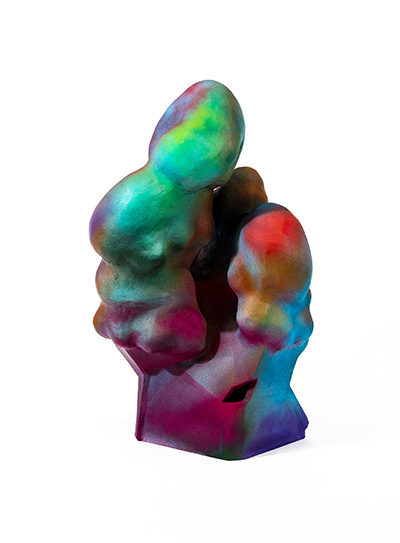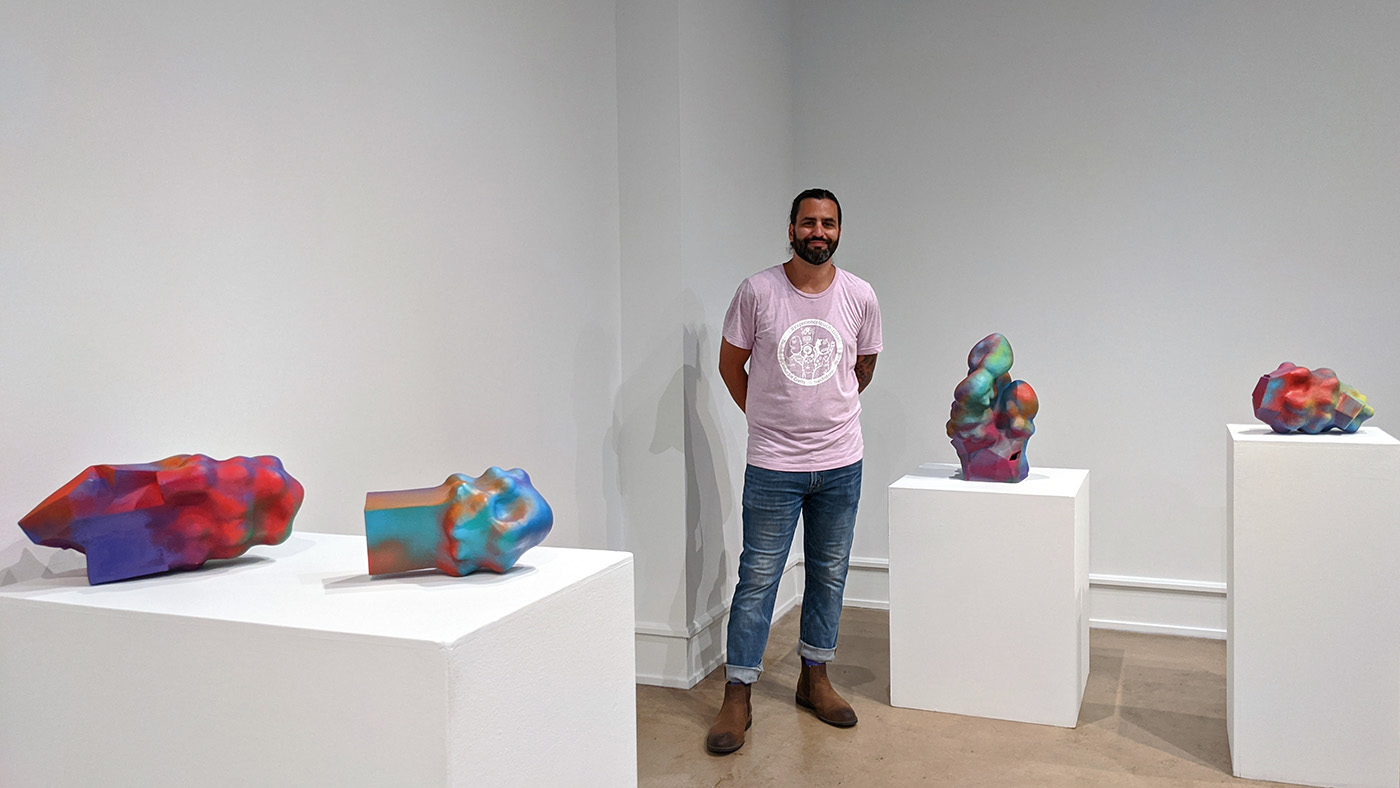Chuck Purviance’s ceramic sculptures function as a visual representation of anxiety, a heightened state that interferes with how a person interacts with the world.
“No piece is a representation of a day, or an event, or an anxiety attack,” Purviance said. “They all collectively represent different elements, imagined representations of my anxiety.”
The brightly hued sculptures also represent how the artist has accepted anxiety as part of his identity.
“I see the work as a way to showcase and display these inner states, take ownership of them, and make the intangible tangible,” he wrote in his terminal paper.
“Hiding in Plain Sight" is the result of Purviance’s three years of graduate study at Wichita State. The thesis show is on view from 9 a.m.–1 p.m. Monday–Friday through July 21 in the Clayton Staples Gallery, McKnight Art Center Room 205, or by appointment (call 316-978-3555).
The Pittsburgh native and alumnus of Edinboro University made functional pottery before he entered graduate school. At Wichita State, Purviance found himself drawn to sculptural and specifically figural ceramic work.
 Courtesy of the artist
Courtesy of the artistPurviance began cranking out figural sculptures after returning from the 2018 iteration of NCECA, the massive annual ceramic education conference.
Another major influence was Ted Adler, associate professor of ceramic media, who encouraged Purviance to take an intuitive approach to his work.
“Shut your brain down, stop thinking about critical writing, just start making stuff almost from your gut,” Purviance said. “I really took that to heart.”
This approach may be particularly appropriate for an artist making work about anxiety, which manifests gut-first.
“It’s always felt like bubbling over,” he said. “My gut reacts first, even though my brain is sending the signals.”
As he began taking a mindful approach to making work, Purviance was also seeing a therapist through WSU’s Counseling and Prevention Services. She helped him develop coping mechanisms for his depression, anxiety and phobias using a therapeutic model called Acceptance and Commitment Therapy (ACT).
“It relates to living in the moment, making in the moment, being mindful,” Purviance said. “I see a pretty strong connection between mindfulness and ACT that works really well for me.”
Long hours in his studio practicing automatic creation produced the sculptures in “Hiding in Plain Sight.” Their brightly hued surfaces reference the artist’s love for bold colors, a smart bit of camouflage. Their forms appear as bodies engaged in personal struggle, leaning, lifting and expanding despite themselves. In a couple of later works, a void appears.
Purviance lost access to his studio the day he was set to fire one of the larger pieces for his thesis show. University facilities were closed to most students and faculty mid-March as a COVID-19 prevention measure.
“I came home, I kept making,” he said. “But I had no idea how I was going to finish them, because I needed the spray booth and I needed the materials to make those colors.”
Adler challenged him to find a way around the problem. Purviance was familiar with spray paint manufactured for automotive use from his days working on cars, when he built and swapped motors. He found that high quality spray paint helped him achieve the color and texture he was looking for.
Now that his graduate studies are complete, Purviance plans to continue the same body of work. He’s curious about the holes that have begun appearing through the process of automatic creation.
“I want to start exploring what’s inside there,” he said. That to me is a metaphor for this past year. I feel like I finally started to get somewhere with the internal exploration with self.
“Putting all the work in that space, I have a sense of conquering it. Being vulnerable without being super emotional, I feel like that is a very strong part of it for me.”
View "In Plain Sight" from 9 a.m.–5 p.m. Monday–Friday through July 21 in the Clayton Staples Gallery, Room 205, McKnight Art Center.


